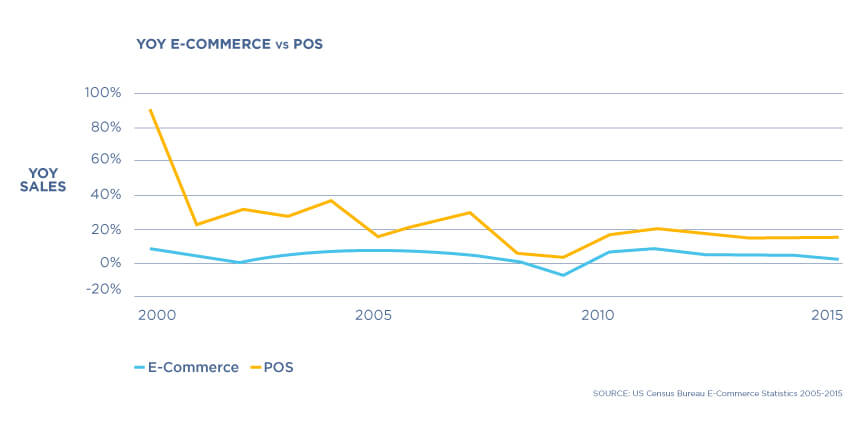
 The-impact-of-e-commerce-on-brick-a...
The-impact-of-e-commerce-on-brick-a... 
Recent years have shown an upward trend in retail e-commerce sales, from less than 1% in 2000 to more than 7% in the most recently published US Census Bureau data. With more consumers shopping – and researching purchases – online each year for their next purchase, what do retail marketers need to know?
While point of sale (POS) continues to increase by 1-7% annually, e-commerce is growing much faster (14-35% over the same period).

U.S. Census Bureau E-Commerce Statistics 2005-2015
E-commerce trends indicate more consumers are looking online not only for purchases but also for product research. Digital marketing has grown out of the necessity to attract consumers during all stages of the purchasing cycle through building brand awareness and displaying a company’s website and products to potential customers at the right time and the right place. Brick-and-mortar stores can find success in employing these digital marketing strategies to take advantage of online activity and boost the in-store shopping experience for existing and new customers.
To learn more about the trends and technology reshaping the retail industry, download our free whitepaper.
Cynthia McLauchlan is DAC’s Data Scientist and is based out of Toronto. To learn more about e-commerce trends in the market, please do not hesitate to get in touch.

